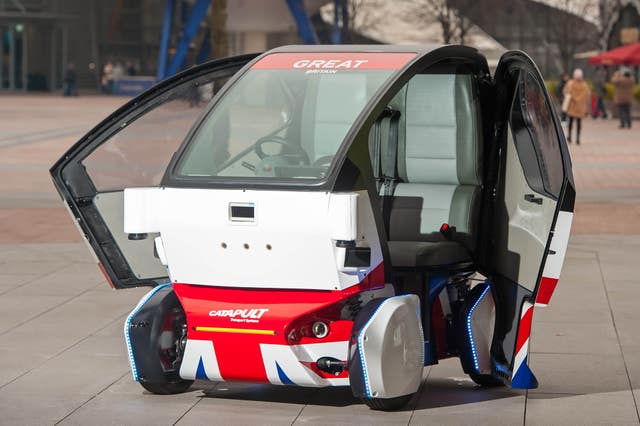
Three autonomous vehicle projects are set to receive backing from a share of a £25 million government fund on Thursday, as the UK edges closer to making self-driving cars a reality.
Business and Energy Secretary Greg Clark will announce the public trials in Oxford, after trying a self-driving vehicle firsthand, which is being tested around the city.
“Self-driving cars will revolutionise the way we move goods and people around the UK,” Mr Clark said.

“These Industrial Strategy projects and investments are exciting examples of our long-term plan in action – ensuring we build on our strengths to reap the rewards as we accelerate towards our ambition to have autonomous vehicles on UK roads by 2021.
“Autonomous vehicles and their technology will not only revolutionise how we travel, it will open up and improve transport services for those who struggle to access both private and public transport.
“The UK is building on its automotive heritage and strengths to develop the new vehicles and technologies and from 2021 the public will get to experience the future for themselves.”
The MP will be taken in a test vehicle run by autonomous vehicle software company Oxbotica, the first person outside its technical team to try the autonomous mode on the streets of the UK. Co-founder Paul Newman will travel alongside, explaining how the system works.
All the projects will include social behavioural research, to understand how driverless technology can be seamlessly integrated into society, with the findings applied to the development for future autonomous service models.
The Government’s Centre for Connected Autonomous Vehicles was established in 2015, in a bid to make the UK a world leader in self-driving technology, with £250 million, match-funded by industry, being invested so far.
Trials are already under way in parts of the UK, including Bristol, Coventry, Greenwich and Milton Keynes.
“The UK is a world leader in transport innovation, and our work on the Future of Mobility Grand Challenge will ensure this long continues,” said future of mobility minister Jesse Norman.
“Automated driving technology is advancing rapidly, and the UK market for connected and autonomous vehicles is forecast to be worth up to £52 billion by 2035.
“This pioneering technology will bring significant benefits to people right across the country, improving mobility and safety, and driving growth across the UK.”

Enjoy the convenience of having The Sunday Post delivered as a digital ePaper straight to your smartphone, tablet or computer.
Subscribe for only £5.49 a month and enjoy all the benefits of the printed paper as a digital replica.
Subscribe